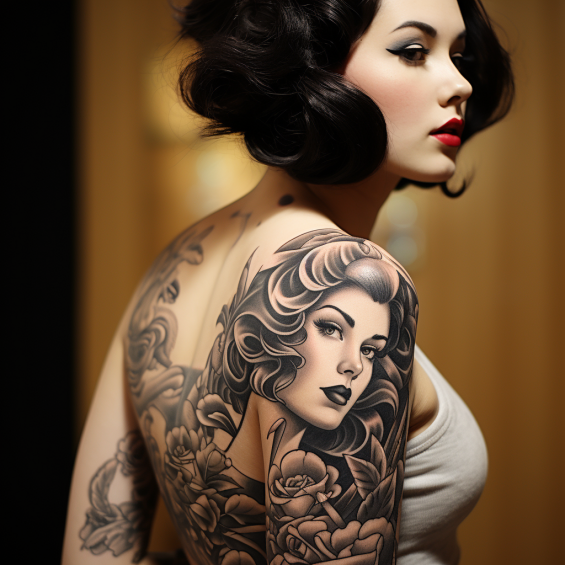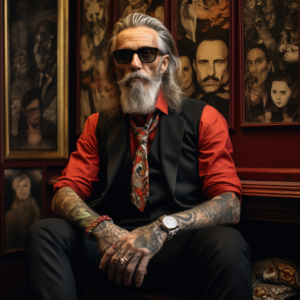In the rich tapestry of tattoo history, “Tattoo Flashback” invites us to revisit the timeless allure of vintage styles and old-school tattoos. From the iconic imagery of sailors and pin-ups to the enduring craftsmanship of traditional tattoo artists, this exploration delves into the nostalgic charm and enduring influence of vintage tattooing. Join us on a journey through the inked annals of yesteryear, where classic styles continue to leave an indelible mark on contemporary body art.
Section 1: The Origins of Old-School Tattoos:
Old-school tattoos, also known as traditional or American traditional tattoos, have roots that trace back to the late 19th and early 20th centuries. This section unravels the origins of these classic styles, exploring the influence of sailors, circus performers, and early tattoo pioneers. The distinct visual language and motifs that characterize old-school tattoos are examined in the context of their historical beginnings.
Section 2: Timeless Imagery: Icons of Old-School Tattooing:
Old-school tattoos are characterized by timeless imagery that continues to captivate across generations. This section delves into the iconic symbols such as anchors, roses, nautical elements, and classic Americana motifs that define this style. Interviews with contemporary tattoo artists shed light on the enduring appeal of these images and their reinterpretation in modern body art.
Section 3: Craftsmanship and Technique:
The craftsmanship of traditional tattoo artists is central to the allure of old-school tattoos. This section explores the techniques and tools employed by early tattooists, from hand-poked methods to the introduction of the electric tattoo machine. The dedication to precision and the distinctive bold lines and vibrant colors associated with old-school tattoos are examined as hallmarks of this enduring style.
Section 4: Sailor Jerry and the Evolution of Old-School Tattooing:
Sailor Jerry, born Norman Collins, stands as an iconic figure in the history of old-school tattooing. This section delves into the life and legacy of Sailor Jerry, exploring his influence on the evolution of traditional tattoo styles. The enduring impact of his flash art and the perpetuation of his legacy by contemporary tattoo artists showcase the timeless nature of Sailor Jerry’s contributions.
Section 5: The Revival of Vintage Tattoo Styles:
In recent years, there has been a notable resurgence of interest in vintage tattoo styles. This section examines the revival of old-school tattoos in contemporary tattoo culture. From dedicated enthusiasts seeking classic designs to modern artists incorporating vintage elements into their work, the revival underscores the enduring and cross-generational appeal of these timeless styles.
Section 6: Contemporary Interpretations and Artists:
While rooted in tradition, old-school tattoos continue to evolve through the hands of contemporary artists. This section showcases the work of modern tattooists who draw inspiration from vintage styles while infusing their own creativity and perspectives. Interviews with these artists provide insights into the reinterpretation and adaptation of classic motifs in the context of today’s tattoo culture.
Section 7: Nostalgia and Personal Expression:
Old-school tattoos evoke a sense of nostalgia and personal connection to the past. This section explores how individuals use vintage styles as a form of personal expression, paying homage to their heritage, values, or simply a bygone era. The emotional resonance of old-school tattoos and the narratives they carry highlight the profound impact of these classic designs on the wearers.
Conclusion:
“Tattoo Flashback” celebrates the enduring charm and influence of vintage styles and old-school tattoos. From the early pioneers to contemporary artists, the rich history and timeless imagery of this genre continue to captivate and inspire. As we look back on these classic designs, we recognize their ability to transcend time, leaving an indelible imprint on the ever-evolving canvas of body art.



